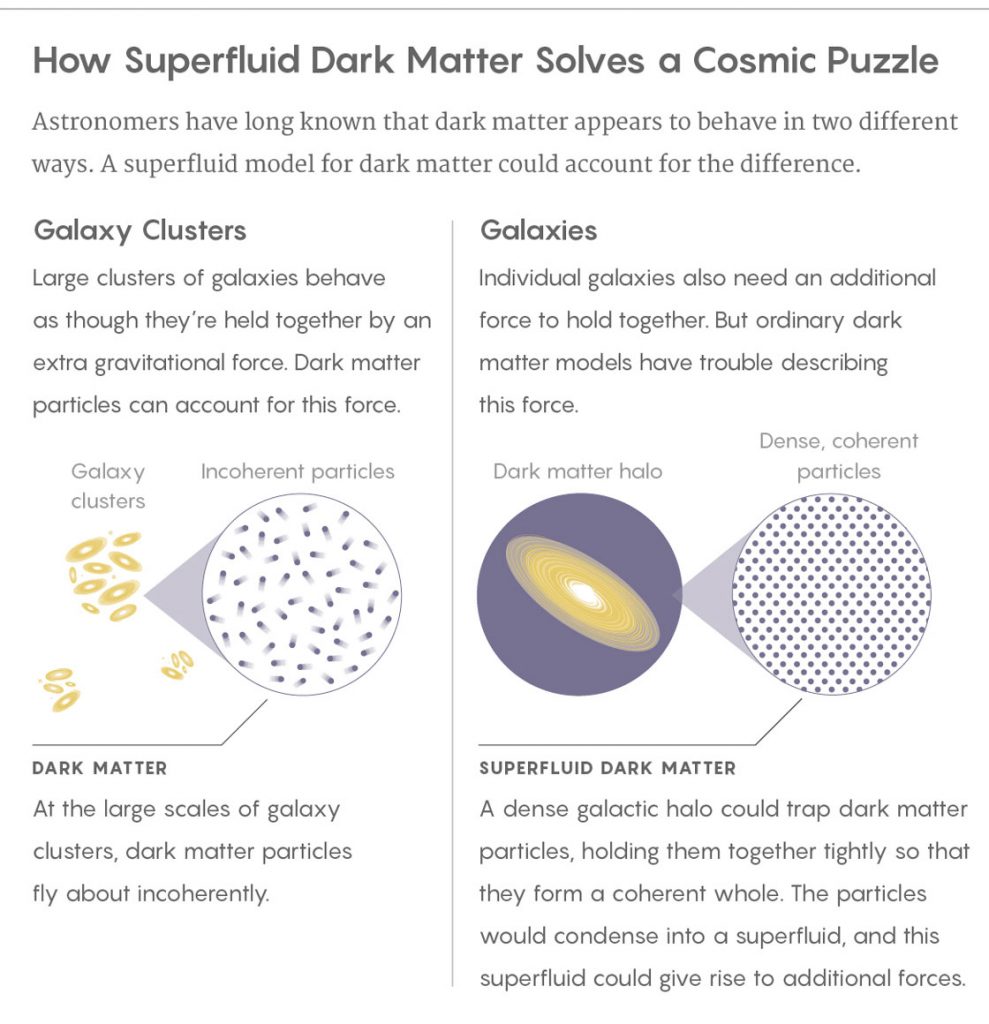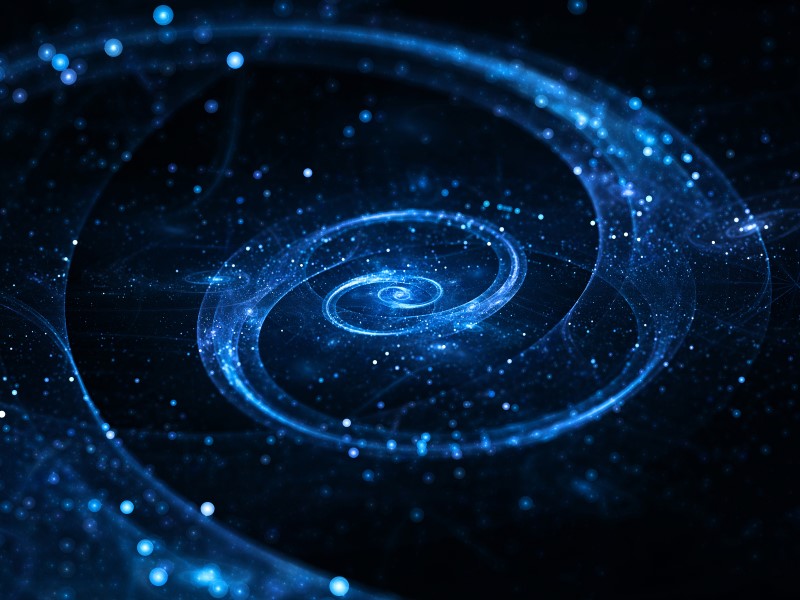Could black matter have been fluctuating form the whole time? Even though dark matter constitutes 85 percent o f mass in the Universe, scientists still do not have a clear picture of what it is. Yet, the latest theory about the composition of dark matter may get us our closest understanding because it is possible that dark matter has been fluctuating its forms, from ghost particles in large structures to a type of superfluid in smaller ones, and soon new tools will be able to confirm it.
Dark matter, as a hypothetical substance, was first predicted almost 100 years ago in an attempt to explain the asymmetry between visible matter and the effect of gravity keeping our galaxies together. While we cannot see dark matter, its effects are observable all around the Universe. By watching the rotation of galaxies or the way light bends as it travels through space, plus much more space phenomenon, we know there must be some other kind of matter in play.
Recently, two researchers suspect that dark matter has been constantly changing form and thus why it’s been so difficult to pin down. “It’s a neat idea,” said Tim Tait, a particle physicist from the University of California, Irvine, told Quanta Magazine. “You get to have two different kinds of dark matter described by one thing.” Currently, the standard of view of the dark matter is that it is composed of particles that weakly interact, similar to axions, and can be perceptively impacted by gravity.
This particular form of dark matter, the ‘cold’ form, is used to predict how immense galaxy clusters will act and conforms to what we already know about how the Universe works together. Scientists have called it a ‘cosmic web’, the way galaxies are suspected to be connected together by invisible filaments of dark matter. But if the scale is changed to look at individual galaxies, then the way they rotate as it relates to the galactic center, the ‘cold form’ model does not stand up.
“Most of the mass “in the Universe”, which is dark matter, is segregated from where most of the ordinary matter lies,” said physicist Justin Khoury said in a press statement. “On a cosmic web scale, this does well in fitting with the observations. On a galaxy cluster scale, it also does pretty well. However, when on the scale of galaxies, it does not fit.”
Khoury and his research partner Lasha Berezhiani are now suggesting that dark matter has been difficult to understand because it behaves differently at the different scales since it changes form. So, if the ‘cold’ matter form is the state of dark matter in large galactic scales, then in a single galaxy scale, the dark matter would be a superfluid instead. A superfluid is a densely packed matter, very cold, and has absolutely no friction or viscosity. It is often called the ‘fifth state of matter’ when it is a Bose-Einstein condensate.
Almost as strange as dark matter itself, superfluids are getting more and more attention as late. Recently researchers have announced that for the first time they’ve been able to create a light the behaves like a liquid at room temperature. And, as we understand superfluids better, the more scientist are beginning to believe that they are more of them in the Universe than they previously thought.
“Recently, more physicists have warmed to the possibility of superfluid phases forming naturally in the extreme conditions of space,” Jennifer Ouellette explains for Quanta Magazine. “Superfluids may exist inside neutron stars, and some researchers have speculated that space-time itself may be a superfluid. So why shouldn’t dark matter have a superfluid phase, too?”

The premise behind the new theory is that the halos of dark matter around galaxies provide excellent conditions to create superfluids. The gravitational pull of the galaxy keeps the matter densely packed and the temperature of open space is low enough to keep the fluids cold. As the scale increases, the forces of gravity become too weak to create a superfluid. This theory with the superfluid could explain certain behaviors at the galaxy level that gravity cannot account for. At the same time, it means there could be a creation of a second, unknown force that behaves similarly to gravity in the dark matter halos.
The idea here is like that for other particles as Oulette explains that when an electrical field is disturbed, radio waves are produced, and if you disturb a gravitational field, gravitational waves are produced. Similarly, if you disturb a superfluid, you produce sound waves or phonons. Phonons would be another force in addition to the already present gravity.
“It’s nice because you have an additional force on top of gravity, but it really is intrinsically linked to dark matter,” Khoury told her. “It’s a property of the dark matter medium that gives rise to this force.” As of yet, this hypothesis has not been peer reviewed and therefore remains firmly in the hypothetical realms for the moment. However, the paper is available to on arXiv.org for other scientists to examine.
One of the points it has in its favor is that it might explain ‘Modified Newtonian Dynamics’ (MOND). Modified Newton Dynamics is a theory that says that a modification of Newton’s law is required in order to take into account observed behaviors in the universe.
“In galaxies, there is a superfluid movement of dark matter and MOND applies. However, in galaxy clusters, there is no superfluid movement of dark matter and MOND does not apply,” the team adds in a press statement. Although it’s still in the early stages of the hypothesis, Khoury and Berezhiani, are optimistic that they will soon have ways to test their theory and confirm the superfluid predictions. And if their predictions are confirmed then we may finally have an understanding of that longtime cosmic mystery – dark matter.
In physics, a phonon is a collective excitation in a periodic, elastic arrangement of atoms or molecules in condensed matter, like solids and some liquids. Often designated a quasiparticle, it represents an excited state in the quantum mechanical quantization of the modes of vibrations of elastic structures of interacting particles. Wikipedia
More News to Read











